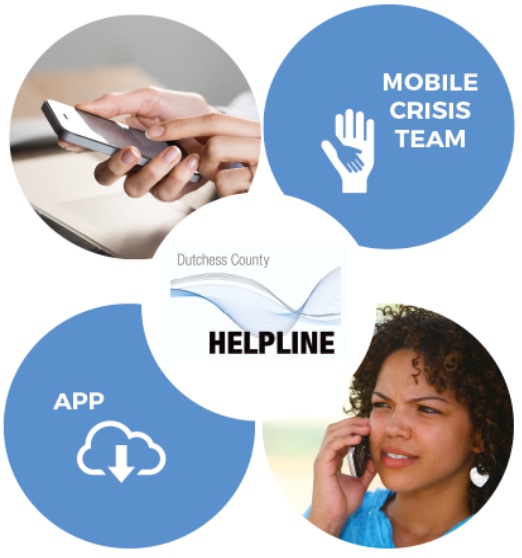How To Predict School Closures and Delays Due To Weather And Snow In Beacon
/Photo Credit: Katie Hellmuth Martin
The past few years in Beacon have seen relatively frequent school closures, but this year, not so much. In past years, by February, parents would be on edge with any prediction of snow, having their work disrupted, kids’ routines wrinkled, or figuring out how to get home from New York City on a train in time for an unexpected early pickup due to canceled programming.
A Little Beacon Blog took to examining the source of how school closures and delays are called in Beacon. On a personal note, I have exited out of all group predictions and penny bets in social media, as the stakes are too high; I need to preserve my adrenaline for issues that are more important. On a positive note, from our research last year for this article, I have been able to devise a private prediction system that you may benefit from.
By the time this article was written in 2019, the season of school closures had blissfully ended, so the post remained in Drafts. We are publishing it now - post Groundhog Day 2020, while spring bulbs have sprung in February - just in case you need a quick reference to make a prediction.
How The Beacon City School District Predicts A Closure Or Delay
The superintendent makes the call on whether there is a closure or delay. In years and superintendents past, this may have included foggy conditions. It also included a double early dismissal - which means an early dismissal is called, and then a few moments later, an even earlier dismissal is called. This can make life unsettling for commuting parents who have limited backup plans and little or no family in the area to retrieve their children.
This is how current Superintendent Matthew Landahl makes the call, as told to A Little Beacon Blog when we reached out to him last February during a particularly bad winter season:
On a regular school day, we have bus runs in-district and out-of-district that run from about 6 am until the last elementary student is dropped off around 4 pm. We actually have a couple of runs that start before 6 am and sometimes we don't wrap up until after 4 pm.
We start checking roads at about 3:30 am in the morning. A small team from our Transportation Department does this. Since I live here in Beacon, sometimes I join in on the fun. For instance, this morning (back in February 2019) we found a lot of areas still icy where our buses go, causing our own vehicles to slip around, thus causing a call for a delay.
Our main concern on any day is whether we can run buses safely between 6 am and 4 pm (this does not include after school/evening activities).
Calls based on forecasts are usually much tougher and are much more open to criticism or feedback from folks. The decision is mine alone and entirely based on whether we feel our buses can run safely. We subscribe to a very good weather service and I look at other forecasts, but in the end, it is my call with input from the Transportation Department.
I totally understand that my decisions cause inconvenience at best for everyone (including my family). It is definitely a no-win part of the job, but I always focus on travel safety with my decision-making.
How The City Of Beacon Plows and Salts The Streets
So now you might be wondering how the streets are plowed by the City of Beacon. What time do they start? We wondered the same thing. Here’s what Beacon’s City Administrator, Anthony J. Ruggiero, M.P.A., told ALBB:
That is a tough one to answer, and there is no easy answer.
There are a lot of factors that go into responding to a snow storm:
time of day
temperatures
the type of precipitation (snow, or mix of snow and ice)
and amounts predicted
No two storms are alike. With storms that start overnight, the Highway Department will be dispatched by the Police. Generally speaking, it is at this point that 5 trucks with sanders/salters are assigned areas citywide and treat roads with salt.
Typically for larger storms, all roads are treated with one application of material to help snow and ice bonding to blacktop. Once snow accumulates to about an inch, all plows are sent to designated areas (typically 24 vehicles, including large trucks with plows and sanders and small trucks with plows) to scrape the roads. This continues until the snow stops and then everything will be treated with one final application of salt. For smaller storms, it may be just salting, possibly followed by a scraping if necessary.
The City of Beacon Highway employees have always taken great pride in the way snow removal and servicing the residents of the City is conducted to assure roads are safe.
How This Writer Tests The Weather To Determine Freezing Streets
If slippage at 3:30 am is a main issue, then one must determine if the roads will be frozen at 3:30 am, possibly before plows or salt trucks are out. This year, in February 2020, there has been very little snow, but a lot of rain. Last week, a few snow flakes showed up in weather apps on smart phones, yet with a 39 degree prediction. Parents starting making backup plans and predictions for a two-hour delay. This writer came up with the following test:
Ask yourself, has the ground been frozen for a long time? Or has it been over 35 degrees for many days?
Step outside. Wave your arms in the air to feel the degree of coldness for yourself.
If it feels kind of cold, but mainly warm and wet, and if the ground has not been frozen for days or weeks, and if the little bulbs have been popping out of the ground, then chances are, the snowflakes we’re seeing in the weather app will not accumulate or freeze when the prediction is 39 degrees, thus causing little to no slippage (though be careful on your front porch steps).
If it has been under 32 degrees for days, and if there is a little snowflake icon in your weather app, and the percentage of precipitation is above 50% in the early morning hours (between 12 am and 4 am), then you can gauge a 70% chance of a school delay (unless it’s a storm with constant snow into the morning and afternoon).
PLEASE NOTE: This is a very unsophisticated, nontechnical method that does not employ the weather tracking system that the District uses, but has been effective in making unprofessional predictions.
On this particular night last week, using this test method, the prediction of no two-hour delay was correct.
Hopefully this helps you plan and understand how calls are made. Keeping your blood pressure down, and your mood up. If there is a delay, that just means you’ve got time to make chocolate chip pancakes!







































